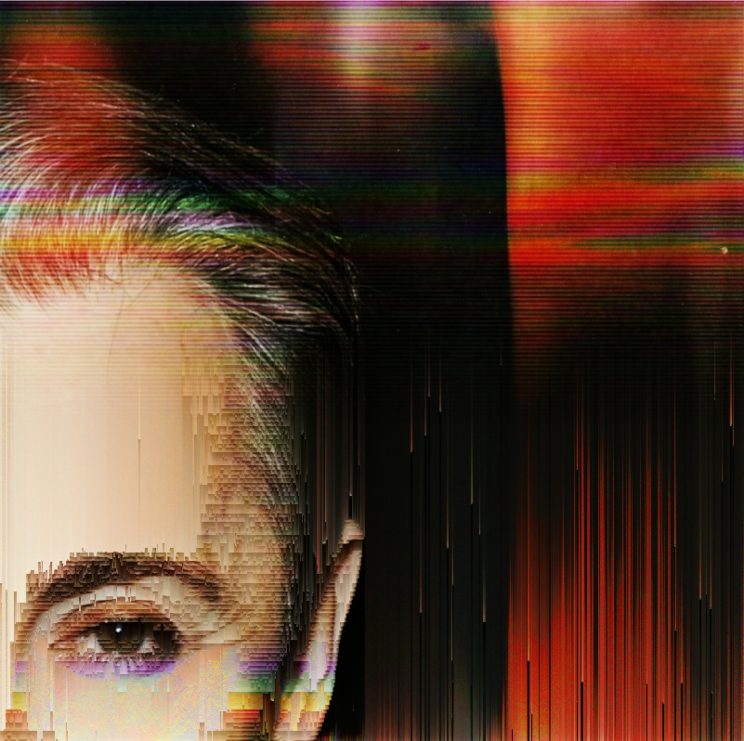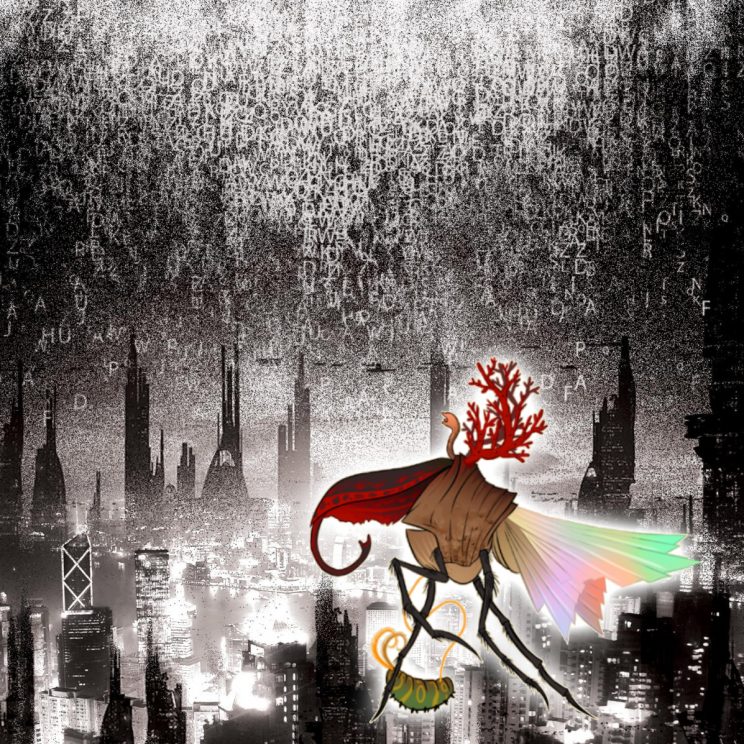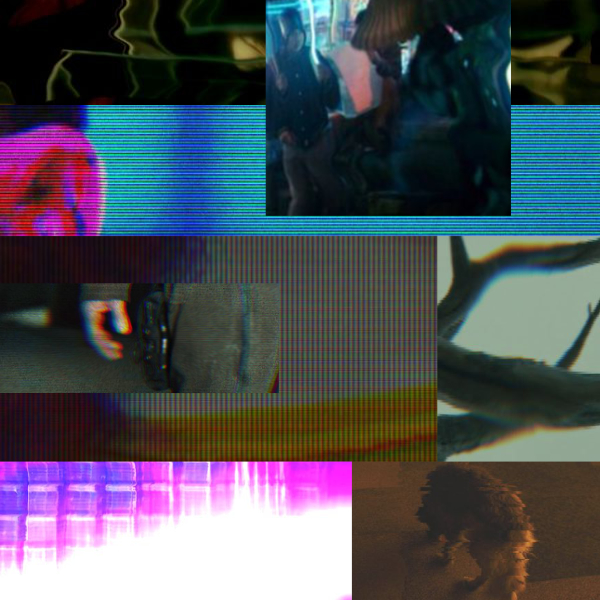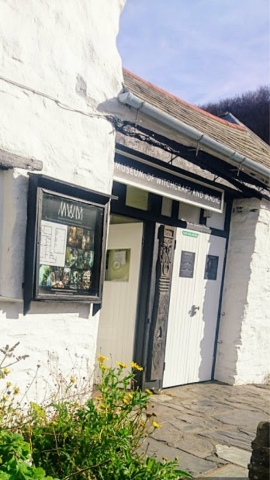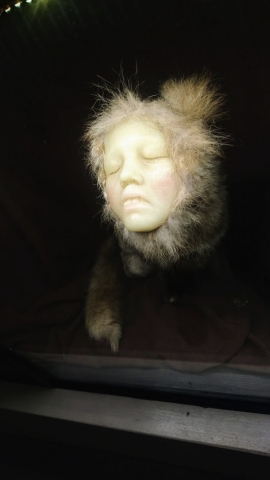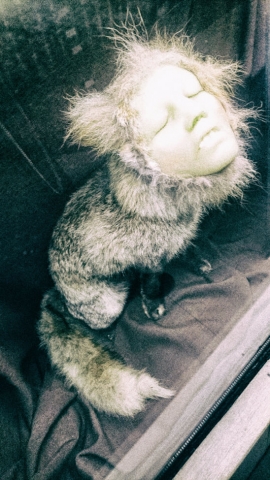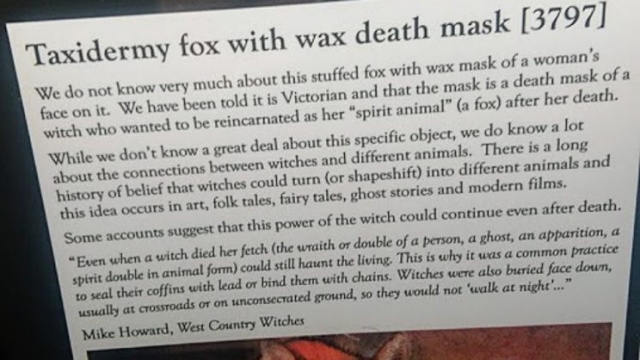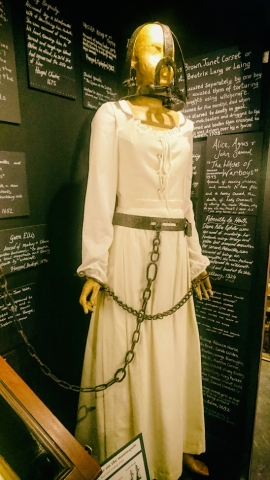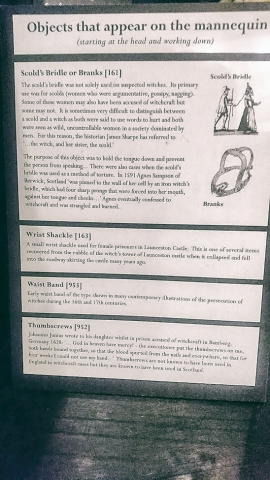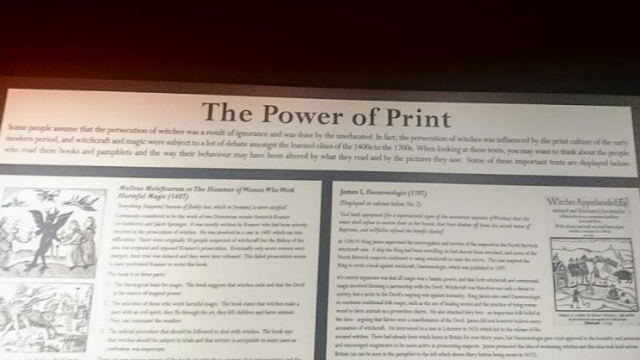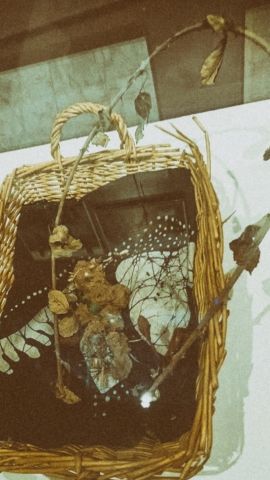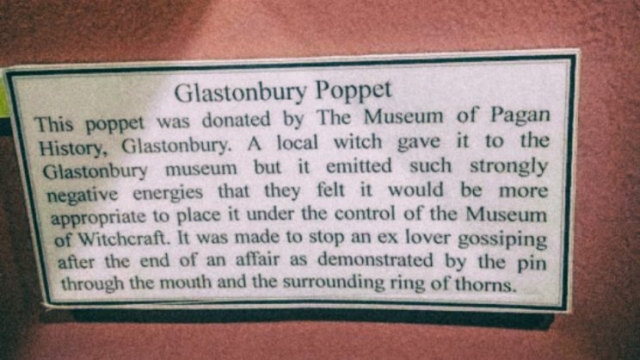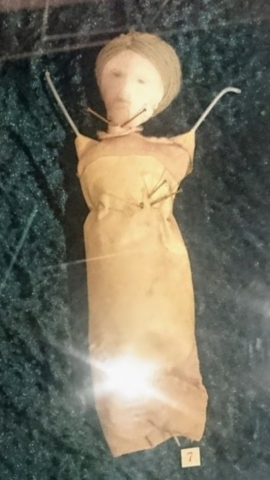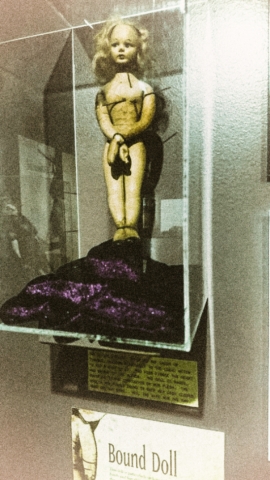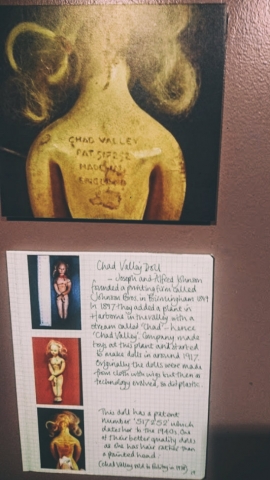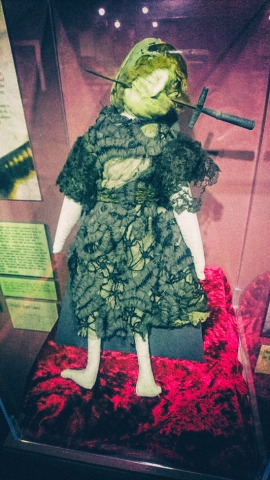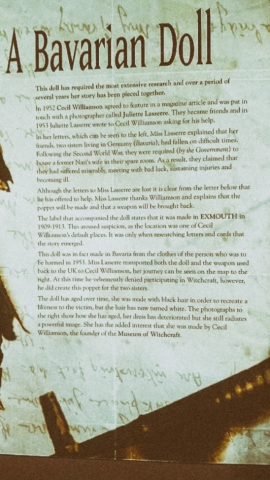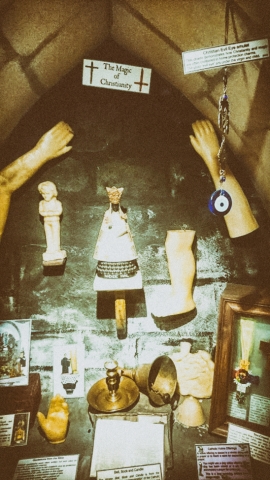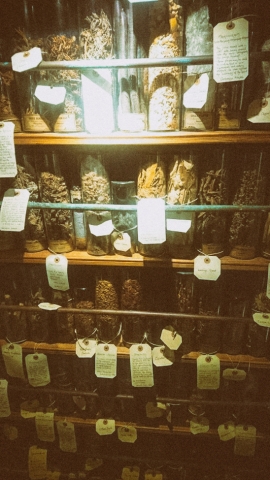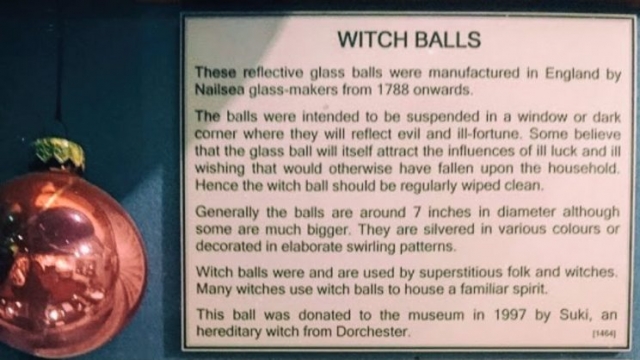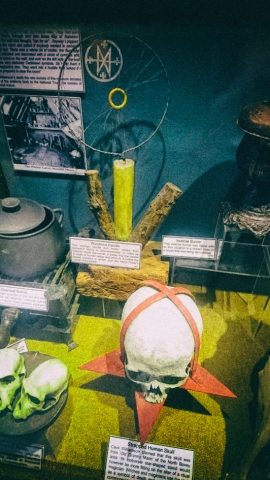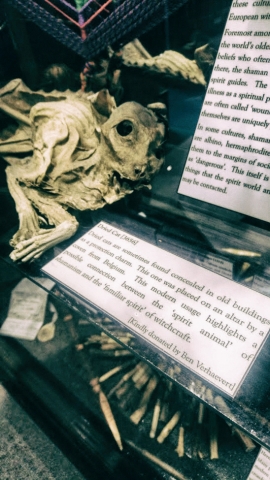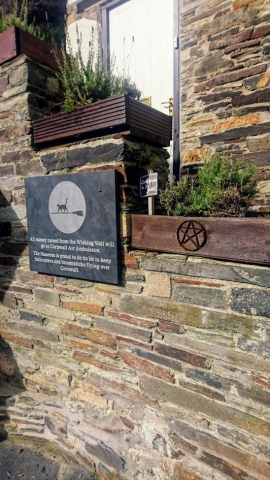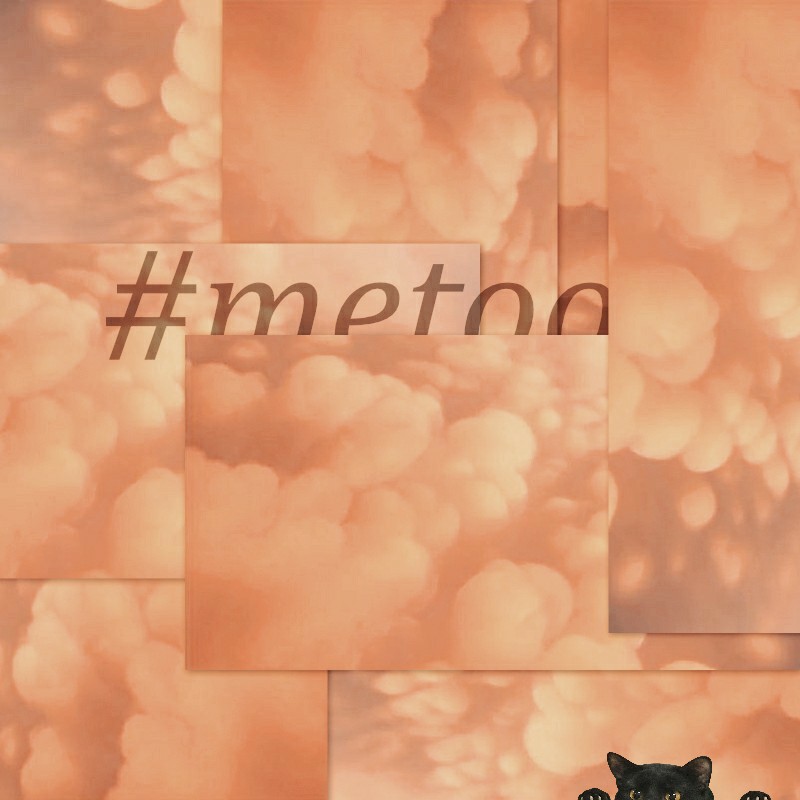In 2049 the world of Blade Runner has lost the gritty but beautiful vagueness of 2019. It no longer allows for ambiguity and the smudgy room inbetween things. To keep you from conjuring up ideas, it even comes with an extra of not one, not two, no: three short films that explain what has happened between the two movies. Nerdy overexplanation much? When I went to see the old Blade Runner Final Cut a week after seeing 2049, the ticket had an accidental question mark in the film title and I was all: „OMG yes exactly!“

That said, it shouldn’t have come as a surprise that Blade Runner 2049 has turned out a nostalgic conservative dystopia, maybe you could even call it dark enlightenment as science fiction. Villeneuve had said in an interview: “Cinema is a mirror on society. Blade Runner is not about tomorrow; it’s about today. … The first Blade Runner is the biggest dystopian statement of the last half century. I did the follow-up to that, so yes, it’s a dystopian vision of today. Which magnifies all the faults.” In a way, yes, the movie indeed mirrors our time, the future shock, the mood of existentialist angst in the face of fast-paced changes in technology and society. It kind of peaked in 2017. It speaks to today’s prevailing sense of constant crisis. Blade Runner 2049 but also all the other tech dystopia movies and tv shows that have come out in the last few months give me a nostalgia for the end of the world, for all those apocalypse stories that came out around 2010, like Melancholia, Take Shelter, Another Earth or Perfect Sense. By now a proper apocalypse is starting to look better than what we have now: An neverending doom-capitalist “things can always get worse lel”. (Basically The Walking Dead. But that’s a different review.)
A future on the edge of an apocalypse that never seems to arrive
So let’s take a look at this world: The 2049 future of Blade Runner still is pretty rainy and people still use umbrellas but their umbrellas don’t have those glowing sticks anymore like they used to have in 2019. It is a bleaker future, it is a future on the edge of an apocalypse that never seems to arrive. As Aaron Bady put it: “Blade Runner 2049 shows us a world which has achieved, by horrible necessity, a dystopic form of sustainability: as in Snowpiercer, humanity’s vermin-fueled continuance is somehow much worse than extinction.” The Earth’s ecosystem might collapse soon, nature has gone barren but the Wallace corporation (that also has replaced the Tyrell corporation in being in charge of replicants in 2049) has found a synthetic way of food production to save humanity. Corporations seem to be just as powerful as the government, it has the feels of a police state. There is a hint of a steampunk Kafka in the bureaucratic office part of this world – the police headquarters, the archives. His name and the baseline test the main character, the replicant cop Joe / K, has to pass after each mission also can be read as a play at Kafka’s Joseph K.: a man living in a constant trial.

So what even is a “replicant”?
So what even is a “replicant”? It is a genetically engineered humanoid being made of organic substances. Replicants – so far – come to life fully grown-up, hatching from transparent body bags, just like the “sleeves” in the tv show Altered Carbon (which by the way I liked more than I had expected. Its biggest neglect is the emotional, ontological and ethical questions, the “how does it feel?”, the intimate sensation, the “how does it change my self when I switch my physical body?” Even Doctor Who was more dedicated to explore that part of body switching.) Blade Runner 2049 iz serious movie, Blade Runner 2049 hasn‘t got time for LOLs and feelz.
Psychologically replicants are said to have less empathy than humans. There are three product lines: Nexus-6 by the Tyrell Corporation, with a limited four year lifespan. Those were the replicants that were hunted in the original Blade Runner movie, where the premise had been that if replicants live longer than four years, they would have made so many personal memories that they develop proper emotions and it you can hardly tell them apart from humans anymore. Nexus-7 is the last model Tyrell has made: Rachael is Nexus-7, the replicant with whom the replicant hunter Deckard falls in love in the first movie. It’s only in Blade Runner 2049 that we learn that Rachael was a new type of replicant that was built to be able to give birth.
In 2049 then, the standard is a new Nexus-8 line of replicants, made by Wallace corporations. It has an open life span, is supposed to have no will of its own ever. Or at least so Wallace has convinced the officials in a rather brutal way, shown in one of the pre-BR 2049 shorts, Nexus Dawn. It is a slave race, especially produced for work in the off world colonies. The Nexus-8 replicants can be very unpoetically identified by an ID number on their eyeball when they “look up to the left”. (I guess that’s not meant as a political metaphor but seeing how blunt some other metaphors are, I’m not even sure.)
The Tyrell corporation that had built the old 2019 replicants went bankrupt: They were considered dangerous and were banned and hunted down. As we learn in the short prequel film Blade Runner Black Out in 2022 replicant rebels used an electromagnetic pulse to cause a blackout in order to wipe out all data about them. That has not only made it harder to hunt them down but it also has destroyed a lot of other data. See, those are the dangers of everybody using cloud storage provided by the same few tech corporations!

The Blade Runner world in both movies vibrates with hauntology: It looks to ghosts of the past to evoke a future, a specific kind of past. Just take Blade Runner 2049’s story of The Blackout; it brings the Great Blackout of 1965 in the USA to mind, which also echoes in the flickering same-era Elvis hologram in the remains of Las Vegas and even in the housewifey persona that Joy, the personal hologram assistent of K, puts on when we first get to see her. The post-”something terrible” mood also rings in the post-war Frank Sinatra hologram singing ‘One for my baby’. Villeneuve could have picked anything, but that we get Sinatra and not Miley’s ‘Wrecking Ball’ adds to the dusty (and this movie really is pretty dusty, or rather: half very dusty, half very wet – all climate extremes) kind of nostalgia this movie conjures up: A future nostalgia for an idea of a more conservative past in which real (white) men still were real (white) men.
Maybe that’s why in Blade Runner 2049 we also don’t get the playful decadence of the old movie’s Tyrell corporate building. Its delusions of grandeur were nods to a diversity of histories and cultures, just like replicant designer J.F. Sebastian’s flat was. Tech in the first movie was dark but it still was associated with possibilities, with play. Cruel play, if you think of Sebastian’s toy creatures that reminded me of old travelling circusses with their cruel freak shows. It was not explicitly said if his creatures had feelings or not but some of them sure had a desperate look in their eyes, like being caught in their toy bodies.
The Tyrell building’s interieur had lots of detail, from lush candle holders to art deco wall ornaments. There were pillars like in ancient temples that made even an owl seem quite at the right place. It was a weird orientalist steampunk pyramid that has always reminded me of the Institute Du Monde Arabe in Paris (built in 1987) in its combination of high tech and old orientalist patterns. Très multi-culty. The Wallace corporation building in 2049 then doesn’t look back, it is more of a brutalist (another hint evoking the ghost of the post-war 1950s) now and forever, all clean lines and no frills. Playtime is over, baby. Alice Sweitzer points outt though, Villeneuve got brutalism all wrong though because “it is a brutalism stripped of all sociality, and stripped of its most important element: people. In that sense, it’s not really brutalism at all.” What’s left then, is a barren brutalist form of architecture as a manifestation of power of the few over urban landcsapes. The counterpoint in Blade Runner 2049 are the even more barren desert landscapes.
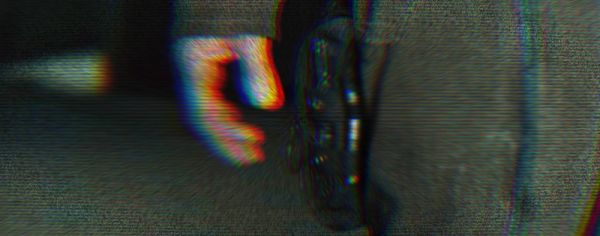
Spaghetti, anyone?
While I agree with Aaron Bady that this Blade Runner is no regular western anymore – K strives to frontiers to find them brutally barren and desolate: the farm, the factory, the casino, the sea – I first wanted to write this review about Blade Runner 2049 as a post-anthropocene (instead of post-war) spaghetti western. There are multiple scenes of K/Joe riding into lawless desert ghost towns (when he hunts down Sapper on his farm, when he tracks down his wooden horse in the child labor factory, when he finds Deckard in the saloon ruins of Las Vegas) that reminded me very much of spaghetti western. It’s in a certain focus on big images, like Sapper’s hand hovering over the holster (a holster, that carries a medical bag though). It’s in how somehow everyone is an outlaw, the whole “a man’s gotta do what a man’s gotta do” ethos, in the lonesome hopelessness. I’d still really like to read a piece about Blade Runner 2049 as political spaghetti western. Or Zapata western but I don’t know enough about them to write this myself. You could Deckard as whiskey priest and that would fit in too. In one of the Blade Runner 2049 prequel short films, ‘Nowhere to run’, Sapper gives Graham Greene’s ‘The power and the glory’ to a girl. It’s a novel in which an unnamed whiskey priest gets hunted down. In the main movie then you get a scene where the hunted down Deckard is all “I got a thousand bottles of whiskey”. In the novel the whiskey priest also has a daughter. See, the sad thing with all the references and allusions that are planted within Blade Runner 2049 is that it is not satisfying to find them because it feels like you solved a crossword. As Claire Napier writes: “it is so itemised that one becomes a relay service rather than a reviewer.”
It is a sad soldier tale, too. Joe, the replicant soldier who kills other replicants without asking questions, just wants to live a simple happy life with his holo-wife Joy when under a barren tree he finds remains of a replicant woman. An examination shows that she has given birth – a sensation as it’s deemed impossible for replicants to reproduce. Joy, circling and fluttering around him like a Tinkerbell, does what women do in conservative stories: She tempts Joe, tells him she always knew he was special, so he starts thinking he might be the one, the born-not-made son of a replicant. (And of course temptation gets punished, both are not special, both die.) The viewers that got used to Villeneuve’s use of metaphors already knows K/Joe is not really the chosen one when a wooden horse becomes the object that sends K/Joe on his search: Trojan horse, barren wood, we get it. He was not even the only replicant who had the memory of the wooden horse: Sex worker replicant Mariette of the Replicant Freedom Movement, recognizes the wooden horse when she sees it at K/Joe’s flat and says that it is from a memory. In the end he seems to be okay when he finds out he is not a self (isn’t he?) but only a tragic soldier who at least can chose whom to serve so he sacrifices himself to unite father and child, the real naturally born replicant: Ana, the child of Rachel and Deckard. Joe/K dies happily, tears in the snow, having not only learned about the importance of being born-not-made but also about the idea of family as core unit of society. Yay!
Not.
Oh, how much I missed characters like Roy and Pris from Blade Runner 2019 when watching this bleak monster of a movie.

A Frankenstein who hopes to have found the Adam and Eve of a reproductive slave race
In Blade Runner 2019 empathy was the thing that distinguished replicants from humans. There was the Voigt-Kampf test, a psychological interview as empathy test, but as it was used to tell whom to kill it clearly was an absurdity, a kind of paradox. In 2049 it has become even more clear: Empathy is not exactly humans’ strong point. “Just think of the children!” – here they are, labour slaves in an industrial desert. Wallace thinks of his creatures as children, too, but he is more like the new master of puppets and has no empathy at all for them. They are but the tech that can help him get more power. He is a blind man (both metaphorically and really, ORLY YARLY) whose God delusions are all over his monologues. His personal slave soldier species are referred to as angels, just like the soldiers of the Sons Of Jacob in Handmaid’s Tale. A Frankenstein who hopes to have found the Adam and Eve, Deckard and Rachael, of a reproductive replicant slave race he wants to rule – a race that’s stronger and build in what he sees as perfection but also easier to control than humans. Here ring AI tech dreams.
They are disposable material to him as long as they can’t bear children, which is shown to us in a special scene filled with aestheticised violence, in which he kills a newborn replicant woman after finding that she is not able to bear children. It is a pretty long aesthetic violent scene. I guess, just in case else we might not get it, as if it was such a brandnew idea that women are worth nothing if they can’t bear children. Thanks, Villeneuve. So, not empathy, no, the bland right-wing/conservative vision this movie caters to is the idea that birth is what makes humans full humans. The same ancient idea that is behind battles about abortion rights: men’s highly irrational and merciless fear of what women would do if they were to have full freedom to decide over their bodies. In the movie humans are scared that it would tear society apart if replicants could replicate and Wallace keeps them under cruel control while playing with this danger.

In a text about (ro)bots being given mostly female names, Laurie Penny quotes Donna Haraway not about replicants but about similarly feared creatures: “The main trouble with cyborgs, of course, is that they are the illegitimate offspring of militarism and patriarchal capitalism. But illegitimate offspring are often exceedingly unfaithful to their origins. Their fathers, after all, are inessential.” Penny continues: “The rueful paranoia at the heart of these visions of the future is that one day, AIs will be able to reproduce without us, and will summarily decide that we are irrelevant. From Metropolis to The Matrix, the nightmare is the same: if androids ever get access to the means of reproduction, nothing’s going to stop them. This is, coincidentally, the basic fear that men have harboured about women since the dawn of feminism.”
The battle over the power of reproduction, whether with forced sterilization or by denial of abortion rights, has a long tradition and it is a tough choice to place this topic at the center of such a big mainstream movie. It is not just in Wallace’s breeding efforts, the main story arch is not just Pinocchio all over: The marionette does not just want to become a real boy. His idea of becoming a real boy is tied to being born, not made. Biology, the past, not memories or actions and interactions define the self in Blade Runner 2049. Just like in Handmaid’s Tale, where in S1E4, Offred’s Commander talks about “biological destiny”: “Children. What else is there to live for?” It is this idea that the movie mostly revolves around, authenticity by birth.
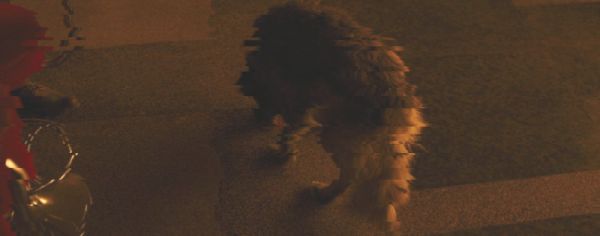
Thankfully the movie has at least one character who is not obsessing over authenticity: old Deckard, aka Harrison Ford who plays the role as if he was Sean Connery playing his (Indy-Ford’s) father in Indiana Jones’ god-knows-which-sequel. He is the only one from whom we do not know if he is human or replicant. Even Joi, the hologram woman, longs to be a “real girl”. Deckard though, sticks to “knowing” what is “real”: It is something everyone, even his whiskey-slurping doggo, gets to decide or to feel for themselves.
The whole focus on born replicants is such a disappointing step back from Blade Runner 2019 which rather suggested that memories and social interaction are what makes beings human. It was musing about what makes you self-aware. As Sasha Geffen observes: The rebel replicants “were perfectly docile until the knowledge of a robot birth glitched out their systems. The idea that they might reproduce of their own accord makes them believe they are deserving of rights and freedom, that they are even, as one puts it (echoing the tagline of the Tyrell Corporation), ‘more human than human.’ Their sapience and self-awareness is not enough to make them want a life of their own, as it was for the original film’s replicants.”
One must imagine the dying Joe/K happy for not being these rebels’ Neo
Honestly: One must imagine the dying Joe/K happy for not being these rebels’ Neo. This focus on being defined by birth is what makes this movie look like a dark enlightenment wet dream. No multiculturalism, no co-existence, no liquid inbetweens, no cyborgism, but a “who’s the best race” transhumanism. So binary, too! No 3D for gender. If it wasn’t for Madame. But then, Joshi is more about becoming “one of the guys” male in order to get a man’s job, even with a hint of workplace sexual harassment against a subordinate. All the fluid, queer, transgender elements of Blade Runner 2019 are gone: masculinely athletic Zhora, and of course Pris and Roy, both stunningly camp replicants – they wrestled the last drop out of their lives, they were all about the anarchic life-finds-a-way life and make those new rebel replicants look like mere shadows.
As Geffen also quotes Haraway: “The cyborg does not dream of community on the model of the organic family.” Sadly the rebel replicants in Blade Runner 2049 do. Even the holograms do. Even the sex scene for which Joy hires a sex worker to give Joe/K a more authentic experience reminded me more of the Handmaid’s tale sex ceremony than of two artificial life forms getting sexually playful. It’s a visually and conceptually interesting scene but does not carry more than a tech novelty charm. It is about Joy faking it for Joe. Joi was constructed in a way that all her pleasure is pleasing him and all the “she’s an AI breaking free” reviews can go fuck themselves for their “born that way” logic and their reinscriptions of docile women roles. If I would have to pick a character to stand for this whole film it would be Joi though. Like the Kamala metamorph in Star Trek TNG’s ‘The perfect mate’ she is a being at whose core it is to do everything to please men. Other than Kamala though, the character Joi is an AI, a designed being. Designed to be what some men dream of in women.

Both, this movie and the Handmaid Tales series, refer to the biblical story of Rachel, the wife of Jacob who was barren but forced her maid to have intercourse with Jacob and act as vessel for his children. In Blade Runner 2049 Wallace says that replicant Rachael was named after the biblical Rachel. Whereas in the old Blade Runner Rachael became human by becoming self-conscious and by falling in love, Villeneuve turns her into a mere vessel, defined by giving birth to Ana Stelline, a figure that is mainly a vessel for others to project their ideologies and fears on. She’s a fragile and kind innocent child-woman figure, a kind of counterpart to the gloomy father figure Darth Wallace. She is working for his corporation without him knowing that she is the born-not-made one. She lives isolated in a cage due to an immune system sickness, in a dome where she creates memories to be planted into replicants to structure their personalities. Which is presented in a way that gives her the air of a mother when she dreams up children at a birthday party or when she tells K “there is always a bit of the artist in all of their creations.” Which does not really hint at the power of art but at her implanting some memories of her actual childhood into replicants.
Why the Volk – replicants could just seize the means of reproduction and live happily ever after
The women who lead the Replicant Freedom Movement, just as Joi, the holographic wife, again remind me of The Handmaid’s Tale, just think of Serena Joy, the Commander’s wife who has planned the men’s right revolution with him. It’s like with women (or gays) in nazi movements who happily plot against their own liberty – they get downplayed as ironic detail, which often prevents seeing their important contributions within those groups. Something that Handmaid’s Tale gets. There, it was even Joy who’s idea it was to center the new world around the message “fertility as a national resource, reproduction as a moral imperative.” Sounds like the rebel replicants’ goal too. At best aside from biological reproduction they seem to strive for a hive mind (remember the bee hives that Joe/K just dips a hand in but draws it back, remember the shared wooden horse memory of Mariette and Joe): Interlinked. Not the individual counts but the swarm, not a diverse open collective but a born-not-made people, the future of the Volk.

The enforced family as core idea, being part of a “better” group by birth – it’s that stuff that Villeneuve also is playing with. Let me ask again: Why the hell would it matter to replicants whether their children are born or made? Why the Volk – replicants could just seize the means of reproduction and live happily ever after sparing themselves all the gendered battles over women’s bodies. This utopian idea might be far too queer for Villeneuve who instead has turned Blade Runner in a horribly conservative vision of a future and I don’t buy the movie as a warning of what today’s politics could lead to. Villeneuve’s plan to film “a dystopian vision of today” does not work. He indeed magnified exceedingly that women can reproduce or they get killed, and also the idea of belonging or not belonging to an elite group with special rights by birth. But does he show both as a bad idea? Not exactly. Killing non-reproductive women is shown with a cruel lust and belonging-by-birth is the new rebel hope. If you leave out any progressive movements, if you leave out hope, and do what Villeneuve has done, you shouldn’t be surprised if your viewer turn-out is 70% male and 86% older than 25 years (as it has been with Blade Runner 2049) and you have alt-right dudes jerking off to it. Like I said: designed for certain men’s taste.
Joe/K as the self-sacrificing soldier-hero and protector of the family, well, do you want to know what the far right makes of him? Here you go:
“powerful message that the audience can take away from the film: Family is the bedrock of civilization- INTERLINKED- and one’s nation must be simply one’s extended family to feel – INTERLINKED – otherwise you get a dystopia of individual – CELLS- … We are all technologically connected, but we all feel estranged from one another, even vapid MTV stars make songs about wanting to feel – INTERLINKED – but the only way to do that is to have a shared culture, shared values and shared race – INTERLINKED. K finds himself in that dystopian hellhole when he discovers a cause worth fighting for. In this case, the Replicant Rebellion. He becomes a soldier, a literal Nietzchian superman on a rescue and destroy mission. … K the Replicant exemplifies the Aryan warrior ideal. And I’m sure I don’t need to remind you, but there is a rebellion brewing in the Current Year as well. In short, its a film about us, we band of atomized brothers who found meaning in a cause greater than ourselves.”
Nice, isn’t it?

Pretty barren for a movie so obsessed with fertility
I would still say Blade Runner 2049 is worth watching. If only for the visual side – it is aesthetic, sometimes aesthetic even and for a while it feels good that it is moving forward in a rather slow pace, somehow hypnotic. At some point though you realize that the story just is not very good and the slow pace draaags on. Sometimes a film’s length is what it takes to make it epic but in this case it does the contrary. While the stunning visuals suggest something epic, at the end of the movie you don’t even really care anymore if K/Joe lives or dies, you just want it be over and cringe at the hints that there might be a sequel with some boring Matrix-style revolution. For a movie that is technically and in its allegories obsessed with perfection, it is suprisingly clumsily structured: you travel from spot to spot with K/Joe, learn something, visit the next spot, get more info, and so on. A bit like a mediocre computer game structure. All the carefully planted references feel more like easter eggs (or like stuff you need to unlock to get to the games next level) than like something that makes your film experience richer or that even adds much to the story. That it’s such an old white male canon with Elvis, Nabokov, Sinatra and Greene, doesn’t help. Instead of widening the picture the cultural references mostly just fall into place when you decode them or even make the Blade Runner world feel smaller. A poem as baseline test. Villeneuve has turned it into a world that can be thoroughly explained without leaving room for thoughts to nest and grow. No room for glow umbrellas, no room for… the magic of a poetic ambigue way of thinking? Villeneuve pinned down the Bladerunner world like an entomologist pinning down a butterfly. Blade Runner 2049‘s relationship to the original Blade Runner is more that of a nerd‘s movie than that of a fan‘s movie. More about dissecting it and getting it right than about daring to dream it further, to explore possibilities. It is pretty barren for a movie so obsessed with fertility. It is not a critical take on the world of today, it is aesthetisizing proto-fascist dystopia, it’s retro in the worst senses: It longs for not just a conservative but an authoritarian past-future and this is in the blood, in the very veins of this film. It is not just in the story, it‘s also in its structure, it is in how it deals with an understanding of the world.
My impulse to write a Blade Runner 2049 review was the anger that filled me when I stepped out of the cinema after watching it, an anger I couldn’t pin down at first. Now I know I am not just angry about this movie because of the world it has build but even more for the world it hasn’t.
Like this:
Like Loading...
